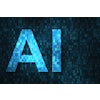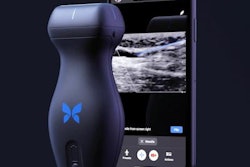
The combination of artificial intelligence (AI) and semiconductor technology is driving a shift in medical imaging, from big machines to personalized care at the bedside, according to a May 25 talk by Jonathan Rothberg, PhD, at the Society for Imaging Informatics in Medicine (SIIM) meeting.
Although two-thirds of the world has no access to medical imaging, two-thirds of diagnostic dilemmas can be solved with simple imaging, said Rothberg, of Yale University in New Haven, CT. Rothberg is founder and chair of 4catalyzer; he sequenced the first individual human genome, invented semiconductor chip-based sequencing, and has launched numerous companies, including Hyperfine Research and Butterfly Network.
"AI is empowering the individual ... and healthcare is coming to the individual," he told SIIM session attendees.
Rothberg described his DNA sequencing work (for which he was given the National Medal of Technology and Innovation by President Obama in 2016); the launch of Butterfly Network and development of Butterfly IQ, a handheld ultrasound device; and how he established the firm Hyperfine, the developer of portable MRI technology.
All of these endeavors were possible due to advances in semiconductor technology and AI software innovation -- and an ability on the part of research teams to imagine a new way of doing things.
"[It's not that] Henry Ford saw a horse and carriage and decided that his first project would be a robotic horse," he said. "The real solution was the automobile. [With Butterfly IQ], we put ultrasound on a chip. We took 20 years of micromachine technology and combined it with 40 years of semiconductors ... the integration was the real solution."
Rothberg's DNA sequencing work has helped him conceptualize healthcare innovation, he said.
"[What I learned] from DNA sequencing that we can apply to healthcare, and specifically to imaging, is how to make low-cost devices, how to leverage the supply chain and [distribute those devices at low-cost], and the importance of aggregating [data] ... and getting actionable information from it," he said.
Combining imaging technology with laboratory results -- that is, outcomes -- is crucial.
"If we have outcomes, if we know what happens [to patients], we can train [algorithms] with deep learning and help people know when to take action," he noted. "And we can combine these modalities, like ultrasound and sequencing results. All of these combinations, and especially laboratory medicine results, are key."
Rothberg is currently working on a new project that aims to put optical coherence tomography onto a chip and use the technology to image the retina, which is a "universal diagnostic platform," he said. Retinal imaging can help clinicians identify early indications of neurological, inflammatory, ocular, and cardiovascular disease, as well as sequelae from infectious diseases such as HIV, malaria, and COVID-19, according to Rothberg. So far, he's raised $90 million to support the development of a device that will use semiconductor chip technology to "see chemistry."
"[We want to] reinvent and miniaturize how people look into the eye," he said. "The eye is amazing -- it's the only place where you can see veins, arteries, and ocular nerves -- a portal into the brain, but also the rest of the body."
At the end of his SIIM talk, Rothberg addressed the longstanding concern that AI will replace radiologists.
"AI is a lever arm for the radiologist: It allows you to help 1,000 people at once instead of one at a time," he said.




















